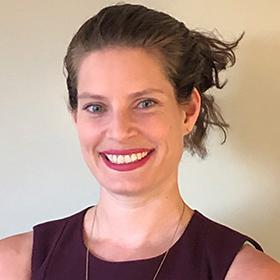Article
California Insulin Biosimilar Plan Could Save $100 Million in Annual Spending
Author(s):
A cross-sectional analysis of Medicare and commercial insurer spending suggests the in-state biosimilar production plan could be substantial in savings even after insulin cost rebates.
Kelly E. Anderson, PhD
Credit: University of Colorado

California’s strategy to produce and market biosimilar insulin at transparent, production-equivalent prices unaffected by rebates could result in an approximate $100 million decrease in health care spending through the state, according to new findings.
In a cross-sectional analysis of California’s proposed strategy to provide its own low-cost and price-transparent biosimilar insulin to in-state patients, a team of investigators reported the policy initiative may provide substantial cost savings for patients with diabetes or otherwise needs for insulin access.
Led by Kelly E. Anderson, PhD, MPP, of the department of clinical pharmacy at the University of Colorado Skaggs School of Pharmacy and Pharmaceutical Sciences in Aurora, investigators sought to provide a model by which to examine the impact of state-led manufacturing of biosimilar insulin on pharmaceutical marketing through low-cost, cost-plus, transparent pricing.
“While state payers can help create a market for state-led biosimilars in California, commercial insurer and Medicare Part D prescription drug plan (PDP) participation is voluntary,” investigators wrote. “This cross-sectional study estimated savings to California commercial insurers and Medicare PDPs from purchasing state-led biosimilars.”
Anderson and colleagues draw total insulin product spending from 2019 paid claims for each of California commercial insurers, and standalone or integrated Medicare Part D PDPs. They acquired a 20% random sample of prescription drug claims data from the state’s Medicare beneficiaries as well as from a database of employer-sponsored insurance claims; drug-level rebate data came from SSR Health.
Next, the cost of biosimilar insulin products was obtained from nonprofit manufacturer Civica; the company previously disclosed target prices of $55 per box of 5 pens, or $30 per vial.
Investigators estimated potential savings through a comparison of post-rebate actual spending versus estimated state-led biosimilar spending. With consideration to the estimation, they assumed all beneficiaries using reference insulin products would transition to the respective biosimilar. They then estimated total Medicare Par D and commercially insured population spending and savings by multiplying their sample scaling factors.
The team reported a $1.1 billion total of paid claims for insulin among Medicare PDPs in California in 2019; reference insulin products comprised 53.9% of this total. After the estimated range of 41 – 84% rebate coverage, the reference products comprised 30.4% of PDPs’ insulin spending.
Anderson and colleagues’ estimation showed transitioning to a state-led biosimilar insulin would have resulted in 12.1% savings—or $46.4 million— among Medicare PDPs in 2019.
Regarding commercial insurers in the state, reference insulin products comprised 57.1% of the $858.5 million total of paid claims for insulin in 2019. After rebate, reference products comprised 42.8% of commercial insurers’ spending. Estimated savings by the state-led biosimilar insulin plan would have been 22.1%—or $63.6 million—in 2019.
Investigators stressed the significance of their estimation showing “substantial” reduction in state-level spending across Medicare PDP and commercial insurance markets alike, even with consideration to available rebates.
Though the assessment was limited with consideration to insurers’ hesitation to switch to a state-led biosimilars market if reference product manufacturers offer higher rebates in response, or that available California claims data may not represent all the states’ operating commercial insurers, they concluded that this plan—like other policy initiatives including a monthly insulin out-of-pocket cost cap—could push insurers toward more lower-cost products for paitents.
“Insurers and pharmacy benefit managers can incentivize patients to switch to lower-cost products through tools such as formulary placement and out-of-pocket costs,” they wrote. “However, including state-led insulin products only on formularies for California plans may require administrative changes, such as using a different plan identification for the California portion of nationwide plans.”
Though California is the first state to have expressed intent to produce biosimilar insulin, the strategy may be applicable across other states and within other fields with high-cost therapies.
References
- Anderson KE, Xuan A, Anderson GF, Socal MP. Estimating Changes in Medicare Part D and Commercial Insurer Insulin Spending Amid Planned State-Led Biosimilar Insulin Production in California. JAMA Intern Med. Published online May 08, 2023. doi:10.1001/jamainternmed.2023.0373























